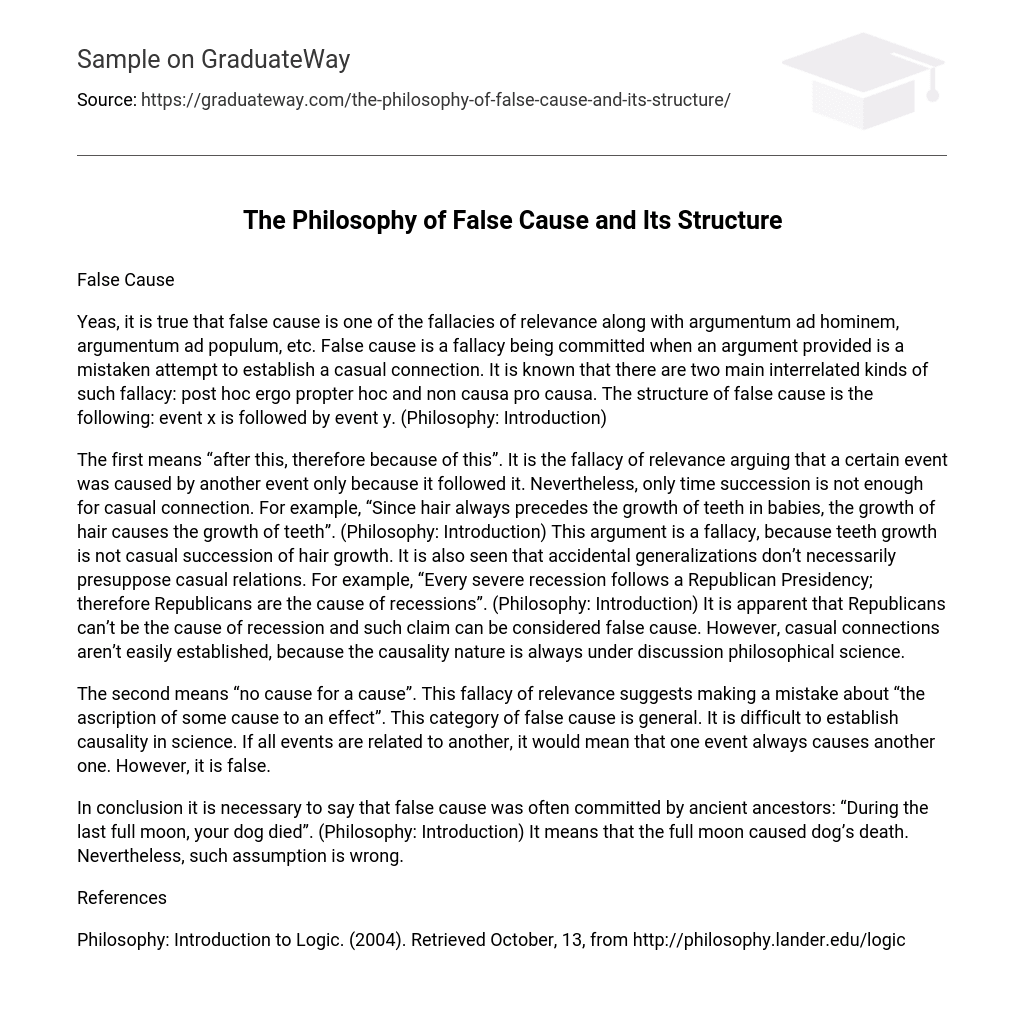False Cause
Yeas, it is true that false cause is one of the fallacies of relevance along with argumentum ad hominem, argumentum ad populum, etc. False cause is a fallacy being committed when an argument provided is a mistaken attempt to establish a casual connection. It is known that there are two main interrelated kinds of such fallacy: post hoc ergo propter hoc and non causa pro causa. The structure of false cause is the following: event x is followed by event y. (Philosophy: Introduction)
The first means “after this, therefore because of this”. It is the fallacy of relevance arguing that a certain event was caused by another event only because it followed it. Nevertheless, only time succession is not enough for casual connection. For example, “Since hair always precedes the growth of teeth in babies, the growth of hair causes the growth of teeth”. (Philosophy: Introduction) This argument is a fallacy, because teeth growth is not casual succession of hair growth. It is also seen that accidental generalizations don’t necessarily presuppose casual relations. For example, “Every severe recession follows a Republican Presidency; therefore Republicans are the cause of recessions”. (Philosophy: Introduction) It is apparent that Republicans can’t be the cause of recession and such claim can be considered false cause. However, casual connections aren’t easily established, because the causality nature is always under discussion philosophical science.
The second means “no cause for a cause”. This fallacy of relevance suggests making a mistake about “the ascription of some cause to an effect”. This category of false cause is general. It is difficult to establish causality in science. If all events are related to another, it would mean that one event always causes another one. However, it is false.
In conclusion it is necessary to say that false cause was often committed by ancient ancestors: “During the last full moon, your dog died”. (Philosophy: Introduction) It means that the full moon caused dog’s death. Nevertheless, such assumption is wrong.
References
Philosophy: Introduction to Logic. (2004). Retrieved October, 13, from http://philosophy.lander.edu/logic





